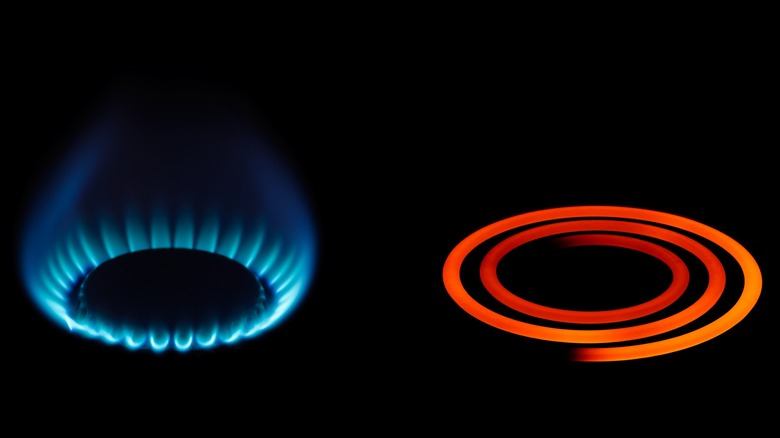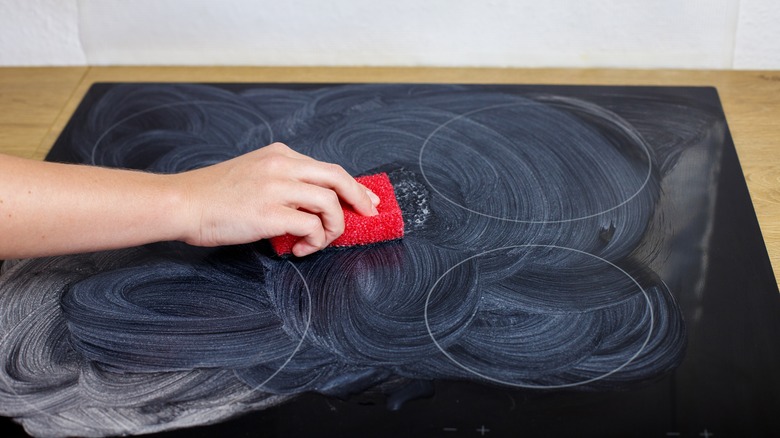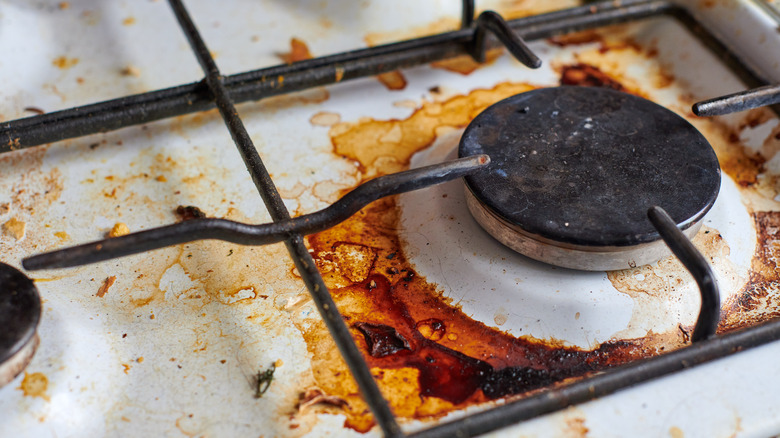How Often You Should Clean Electric Vs Gas Stovetops
Aside from your countertops, which see a lot of traffic, your stove withstands the most abuse in the kitchen. Depending on your preference and where you live (there are restrictions on gas stoves in certain regions), you may own an electric or gas stovetop. While each appliance is maintained differently, they both require daily cleaning to keep them looking good and functioning correctly.
Despite it being a chore that no one enjoys doing (EVER), it's essential to wipe both gas and electric stovetop surfaces after each use to remove spills, boil-overs, and splatters. Those messes become increasingly more challenging to remove the longer they sit and crystalize on the surface. Caked-on, burnt food can affect the burner, causing gas stovetops to click incessantly or struggle to ignite. As the food hardens on electric stovetops, it causes pans to heat unevenly, resulting in hot spots that can burn food.
Although both types of stovetops will need a deep cleaning a few times a year, if done daily, a microfiber cloth, dish soap, and warm water will take care of most messes. For the Sunday gravy meat cooked all day in the pot and on the stovetop, you may need a little more help to get the surface shining again.
How to thoroughly clean electric stovetops
Before using chemical cleaners or anything abrasive, consult the manufacturer's owner manual for recommendations on how to clean your electric stovetop. Improper cleaning can lead to scratches and void warranties. If you own a radiant coil electric cooktop, the burners and drip pans should be cleaned separately. A sleek ceramic or glass surface is easier to keep clean.
Before cleaning, ensure the stovetop is cool. If you have them, remove the coils and drip pans and wipe them with a mixture of equal parts vinegar and water. The high heat should burn off most debris from the coils, requiring only a gentle wipe to remove ash. If the drip pans need more TLC, soak them in the sink with hot, soapy water. Avoid wetting the burner connections, spark igniters, wires, switches, or any other electrical parts that can cause an electrical shock or short-circuit the appliance.
The remaining surfaces on all electric stovetops can be cleaned with glass cleaner or vinegar mixture and wiped dry. If your radiant coil stovetop allows you to lift the top, use the same solution to clean underneath, which collects crumbs and spills.
Make a paste using ½ cup of baking soda and 4 tablespoons of water for stuck-on food. Stubborn areas can be carefully scraped with a plastic knife or razor blade and then tackled with hot water or the paste. Rinse all surfaces with clean water and allow the parts to dry before reassembling the stovetop.
How to thoroughly clean gas stovetops
Cleaning a gas stovetop is a little more labor-intensive, and metal surfaces are prone to scratching more easily than glass or ceramic surfaces. To avoid accidentally igniting a burner, remove the knobs or lock the stove if it has that feature.
Remove the burner caps and metal grates to soak in hot, soapy water while you tackle the other surfaces. Wipe the top of any loose debris and spray the vinegar solution or another degreaser on the stovetop. Give it a few minutes to penetrate any stuck-on grime before wiping it with a microfiber cloth.
Boiled-over sugar left to burn and harden each time the stove is used will adhere to the enamel-like super glue, making it challenging to remove. Rather than attacking the stain with an abrasive cleaner or sponge, try to scrape off the surface with a razor blade and use the degreaser to remove the rest. It is better to make multiple attempts with a milder solution than risk scratching the surface of your stove.
Once the surface is free of grease and dirt, rinse it with clean water and turn your attention to the grates and caps in the sink. If soaking didn't thoroughly clean them, use the paste to scrub the stubborn stains. Rinse and dry the parts before replacing them. If the stove initially fails to ignite, ensure the burner caps sit correctly and are completely dry, then try again in a few minutes.



